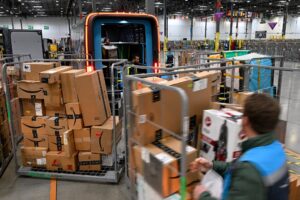Amazon employed a range of illicit strategies to enhance profits within its online retail domain, including using an algorithm that inflated the prices paid by U.S. households by over $1 billion, according to court documents filed by the U.S. Federal Trade Commission on Thursday.
The FTC initially filed a lawsuit in September, but numerous details were not revealed until Thursday when an unredacted version of the lawsuit was publicly disclosed. Many of the allegations stem from Amazon’s use of a “secret algorithm” dubbed “Project Nessie.”
Amazon initially tested the pricing algorithm in 2010 to determine if online competitors were monitoring its prices and to increase prices for products that were likely to be tracked by rivals, the FTC complaint contends. After external retailers started matching or raising their prices, Amazon purportedly continued to sell products at inflated prices, resulting in an excess profit of $1 billion.
The FTC claims that Amazon periodically deactivated Project Nessie “during periods of heightened outside scrutiny,” only to reactivate it when “it thinks that no one is watching.”
“Armed with the knowledge that others would likely follow its price hikes, Amazon could charge shoppers higher prices while minimizing the chance that shoppers would catch on,” the complaint states.
Related: Two of Amazon’s Most Popular Prime Features Might Actually Be Illegal
The FTC claims that Nessie’s algorithm is an “unfair method of competition” because it influences the pricing of other online retailers to align with the price hikes set by Amazon. It alleges the tech giant’s “sole purpose” in designing and implementing Project Nessie was to “manipulate” other retailers into increasing their prices.
In a statement to Entrepreneur, Amazon claims that the allegations “grossly mischaracterized” the tool, which hasn’t been used in several years.
“Project Nessie was a project with a simple purpose — to try to stop our price matching from resulting in unusual outcomes where prices became so low that they were unsustainable,” Tim Doyle, a spokesperson for Amazon, told Entrepreneur last month. “The project ran for a few years on a subset of products, but didn’t work as intended, so we scrapped it several years ago.”
In the suit, the FTC also contends that Amazon has reinforced its monopoly by creating a system where sellers’ “Prime eligibility” is tied to their use of Fulfillment by Amazon (FBA). This restricts them from fully accessing Amazon’s vast customer base unless they opt into its FBA program.
The FTC argues that this tactic inhibits sellers from using alternative fulfillment methods or selling across various platforms, thus hindering their ability to compete online.
When Amazon briefly eased its FBA restrictions, the tech giant realized that this approach could encourage greater diversification among sellers, potentially threatening its market dominance, the unredacted complaint states — adding that an Amazon executive had an “‘Oh crap’ moment” when he realized that this was “fundamentally weakening [Amazon’s] competitive advantage in the U.S.”
“The misleading figures the FTC points to in the complaint falsely portray how we work with sellers to meet our customers’ high expectations,” Tim Doyle, an Amazon spokesman, told Entrepreneur in a statement.
